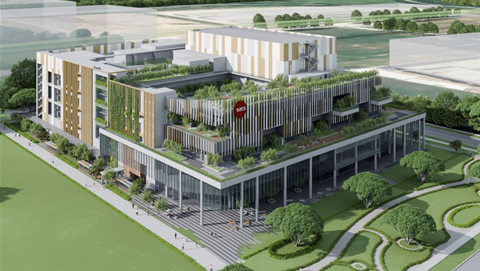Japanese pharmaceutical giant Takeda Singapore has implemented an IoT-enabled solution to have better visibility of daily energy consumption for its manufacturing support building.
This is part of the company's aim to achieve its five-year goal of a 1,600-ton reduction in carbon dioxide emissions by 2025.
Takeda Manufacturing Singapore’s site head George Lam told iTnews Asia that the company deployed EcoStruxure Building, an IoT platform from Schneider Electric, to enhance building efficiency, optimise staff comfort and productivity, and increase building value.
Automation control systems including carbon dioxide sensors and plug load monitoring which controls heating, ventilation, and air conditioning (HVAC) have helped achieve energy efficiency, said Lam.
The company decided to go with Schneider as it is already using the EcoStruxure Building Management System (BMS) solution in its manufacturing operations building, he added.
EcoStruxure Building platform includes solutions including EcoStruxure building operation, EcoStruxure power monitoring expert, and AVEVA system platform.
According to Lam, traditional BMS were hard to manage because they were split across multiple platforms.
EcoStruxure building operation provides insights, control, and management of building systems and devices in a single, mobile-enabled view.
The platform collects real-time data from sensors and AI algorithms analyse data to help operators make decisions to improve energy management and efficiency for the building, said Lam.
Automatic adjustment of power usage
EcoStruxure power monitoring expert uses data from EcoStruxure building operations to predict evolving energy consumption levels, establish energy efficiency benchmarks, and automatically adjust power usage across systems.
Lam said Takeda deployed Modicon M580 controllers in the building's HVAC systems for carbon dioxide sensors and plug load monitoring.
It aids in regulating fresh air intake to improve ventilation by scaling automation control, tracking electricity usage from specific plugs and automating lighting systems to switch off when rooms are unoccupied, he added.
Schneider’s AVEVA system platform helps in improving communication processes, provides remote access, and allows the company to visualise and control plant processes in real time for better productivity and cost savings.
Lam said the manufacturing facility also uses an online real-time monitoring system from industrial IoT startup Petasense that facilitates predictive maintenance, detecting potential equipment failures in advance.
This minimises production disruptions and optimises resource utilisation, he added.









